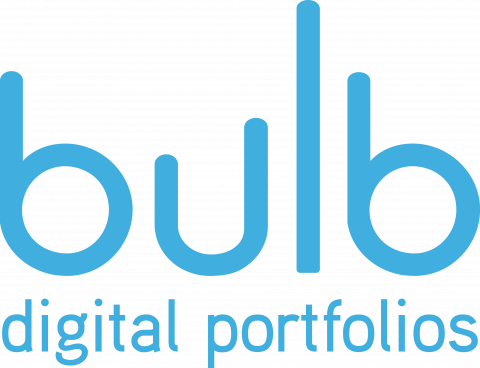A Director of Innovation and Digital Learning shares how his district chose an e-portfolio platform and uses it to inspire reflective learning.
 The other day I got on Facebook to catch up with some family and friends when all the sudden, I saw a picture I posted from 2009 with my then 1-year-old daughter from our trip to Hawaii. I looked a little less gray, with a little more hair, and I remember the stress I felt on that trip when it came to traveling that far with a toddler. I posted the photo then in a mode of defiance, as if to say “See here! We just survived a 14-hour trip with a 1-year old! Ha!”
The other day I got on Facebook to catch up with some family and friends when all the sudden, I saw a picture I posted from 2009 with my then 1-year-old daughter from our trip to Hawaii. I looked a little less gray, with a little more hair, and I remember the stress I felt on that trip when it came to traveling that far with a toddler. I posted the photo then in a mode of defiance, as if to say “See here! We just survived a 14-hour trip with a 1-year old! Ha!”
Looking at it now, with two more kids as part of the Hooker clan, I laugh at how relatively easy it was managing one child. Yet at the time it seemed so hard: keeping her happy, keeping her fed, helping her go to sleep. Each one of these challenges seemed insurmountable at the time of being a first-time dad.
I went back to 2009 and looked at some of my other posts, photos, and videos from the time. It was both nostalgic and prideful to look back at the accomplishments from that first year or so as a parent. It also provided valuable perspective on how far we have come as parents and as a society in just those last 8 years. All of this had me thinking about student portfolios. (I know, this may seem like a stretch, but go with me here.)
How great would it be for students to have a similar “Facebook Time Machine” experience when it came to reflecting on their learning and how much they had accomplished? Much of my educational history is trapped in a dusty box in our attic. It’s filled with papers with red A’s on them (why would I keep the bad ones?) and several other items from my childhood like a journal I kept in 3rdgrade or the 6th-grade VHS video I made. While these were nostalgic to look through, I hadn’t captured what they meant to me or my learning at the time.
Unlike the Facebook posts, where I would give the photo context with a couple sentences of text or a funny quip, my learning was all just completed products. There was no process to be found. Somehow I made that wooden CO2 rocket car. I just had no evidence or recollection of how.
This really made me ponder a big question when it comes to our current learning landscape. How powerful could learning be for kids if they had a portfolio that allowed them to go back and reflect on their learning, both in the moment and, perhaps, years later?
Leveraging Portfolios for Learning
With the nostalgic artifacts of my education, I could look at the finished projects I saved and try to recollect how I completed the project. This completed “portfolio” (I say that loosely, as it was really just a dusty cardboard box full of papers) gave me a glimpse at what I might have learned, but with no context or recollection to the process.
“Reflective learning” is not a new phrase in the world, but it be fairly foreign to educators in the U.S. It’s a term widely used in the UK and New Zealand schools, and is centered on the idea of allowing kids a moment to step back from their learning experience. By stepping back and looking at what they have done, they develop critical thinking skills and make adjustments in the future.
Barbara Sen from the Information School published this paper on the models of reflective practice. In the article, besides outlining a few examples, she mentions how critical it is for students to have support and modeling in reflective practice to really reach deeper levels of thinking. Over time, that reflection can lead to powerful learning outcomes and ideas.
Portfolios Go Digital…and It’s Messy
Besides having to deal with the dust from those boxes in my attic, it was hard to sort through and locate various pieces of my childhood portfolio. If this work would have been digitized and tagged, I could have easily searched it like an online database of my life.

Carl Hooker is the Director of Innovation and Digital Learning at Eanes ISD (TX) and the founder of iPadpalooza. He is the author of the six-volume Mobile Learning Mindset series of books, which offers practical knowledge and strategies for successful implementation of K-12 BYOD programs and 1:1 initiatives. Hooker has been named PR with Panache! Thought Leader of the Year, Tech & Learning magazine’s 2014 Leader of the Year, and an Apple Distinguished Educator.
In our schools at Eanes ISD, we struggled with this initially. There were many different schools of thought around the idea of reflective learning as well as professional portfolios for students that leave our institution (eventually).
A couple of years ago, we started using Google Drive as our back-up portfolio of choice. I loved the price (FREE), but quickly discovered that students’ folders became a real bear to manage if we wanted them to go with the students year after year. Then, a major problem happened in Year 2 of going with Google Drive. How would students work roll up with them? I mean, they could always see it, but no one else, including their teachers, would be able to see their portfolio of work. What’s worse is that by dumping all of this work into a folder in Google, we’ve basically created a digital version of my dusty attic box. You have to sort through pieces of completed work to really determine what is good and bad.
We realized we had to migrate some of this work to a proper e-portfolio system. However, we ran into some major problems on that front as well. Most e-portfolio systems were not very mobile friendly, a big issue in our 1:1 iPad district. On top of that, many came folded into monolithic learning management systems (LMS). So when a student graduated, their work would remain on the LMS.
We wanted something that could be used for reflection but also finished portfolio work. It needed to have a simple log-in, integrate with our Google Drive system, and work well on our district’s iPads. We also wanted to have these final portfolios go with the students when they left high school, so no student would have to go digging back into their LMS a year after high school to find their work.
Fate Plays a Hand
In the middle of this stress, fate played a hand. It just turned out that two dads in my very own district were working on a solution that would easily allow kids to track and reflect on their learning through the years. The company, called bulb , had a slick, user-friendly portfolio system that they had been building over the years to track their own kids’ growth and development.
Under the hood, it was even more impressive. Before I went any further down the path of e-portfolios and their solution, I brought in my amazing Ed Techs that ask all the questions I fail to consider. Looking at the challenges we faced with current systems on the market and our Google Drive hack, we knew we needed something that would provide more transparency and usefulness than just the digital dusty box.
Unexpected Extras
Sometimes a product can offer a solution to one problem and then solve another one you weren’t necessarily aware of. We were excited to give kids the ability to choose what they wanted to publish and what they wanted to keep private. However, the bulb platform had some extra features, such as allowing us to upload almost any type of file format.
This meant that kids didn’t necessarily have to copy and paste entire Word documents into their portfolios. They could simply upload the file and post a description. Also, the easy uploading of videos and pictures made bulb a useful tool for more than just language arts. Art students could take pictures of their work, save them in the platform, and reflect on their process.
It’s that last piece, reflection, that really made us believe we had discovered a platform that really went beyond just housing digital products. We now had an avenue for the reflective learning I mentioned earlier. bulb fulfilled a need we didn’t think we had—helping with students’ deeper critical thinking.
Moving Beyond the Digital Dusty Box
All of this may sound like a ringing endorsement for a single platform; it isn’t. There are likely other programs that have popped up that do similar things as bulb, so when analyzing those systems and your own need for a portfolio system in your schools, be sure to answer these essential questions:
1.) Is the platform completely device agnostic?
Getting a platform that can be accessed from any tool is important. If you want students accessing their portfolios after they leave your institution, they will need to be able to do so from any device.
2.) Is it exportable following graduation?
As I mentioned earlier, the issues with a portfolio within an LMS is that it can often be trapped in that LMS. A student graduates and no longer has access to it. They might be able to download or export some of their work in a zip drive, but then it reverts back to becoming a digital dusty box. Ideally, an e-portfolio system can export to a student’s own personal URL, which would be a great way to keep their work moving with them. At the very least, the student should have continued access to their portfolio after they graduate.
3.) What file types does it support?
Having to convert things to PDFs can be time-consuming. Find a platform that allows multiple file types to save time on conversions and more on writing and documenting.
4.) Are there any storage limits?
This question seems to be dying lately, as more and more companies move to big server farms through Amazon that make the cost of housing data in the cloud cheaper and cheaper. Keep an eye out for hidden limits in storage or in upload availability. Companies can still charge extra for some bonus storage or upload limits, even though it could just require a flick of a switch on their end.
5.) How do you log in?
Uploading rosters from a student information system can be messy and time-consuming. Any system you work with should have some sort of single sign-on approach to help with onboarding and upkeep over the years.
6.) Who owns the data?
Data privacy is also a hot-button issue of late. Making sure the individual users own the data is important. There are some “freemium” models out there that are generally free because they sell student data or have some hidden up-charge feature. No matter what system you choose for e-portfolios or otherwise, make sure the company signs a standard Student Data Privacy agreement beforehand.
7.) Who can see students’ work?
Having teachers access their current students’ previous work can help them guide their learning in the future. However, students may not want to make all of their work public. Look for systems that have a variety of access points and allows students to organize their public-facing work in a cohesive and eye-pleasing way.
While this isn’t an exhaustive list of questions, it should help you see the value in e-portfolios and also help you get started on the path of reflective learning with your students. Looking back on their learning should be both nostalgic and educational. Find solutions out there that are nimble and also easily accessible and searchable. Otherwise, you might as well ask students in your schools to carry a large, dusty cardboard box with them from year to year.


